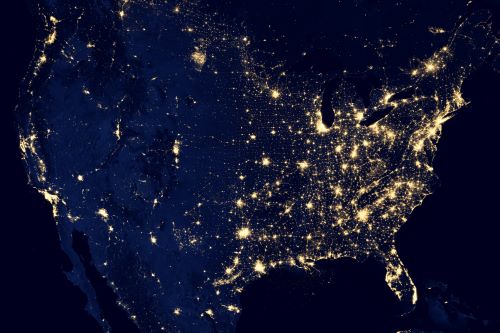

The official definition of the Internet is quite confusing, as it is usually defined as an international system of interconnected computer networks based on a set of protocols. To take it simple and use more ordinary words, it can be called a “network of networks,” as the Internet comprises millions of local and global private, public, academic, business, and government networks interconnected by wired, optical, and wireless technologies. Still, no matter what definition we stick to, the Internet keeps being a valuable part of almost everyone’s life, and it is difficult to imagine life without it.
History of the World Wide Web
As you might have guessed by now, the original version of the Web we see now did not contain any search engines or colorful sites like this paperhelp page or the one you see on your screen now. In fact, it was way more simplistic and prosaic, as the idea of its development originated with the American military.
They came up with the idea of creating a computer network that could become a tool for exchanging data about any hostilities, and it turned into reality in 1969 in a project called ARPANET. Soon after, they attempted to conduct a communication session between 2 local computers using a remote connection. Although the formation process was difficult and long, scientists began actively using the network, which led to its growth. Here are some notable historical events:
- 1971 – a program for sending emails is created.
- 1973 – UK and Norwegian computers are connected to the network, turning it into an international one.
- 1983 – the NCP protocol gets replaced with TCP/IP, building the foundation of the Internet as we know it today.
- 1989 – the first World Wide Web page editor is released, making it possible to work with the HTTP protocol and HTML markup.
- 1990 – the first Internet connection using a wired telephone and modem.
- 1991 – the World Wide Web becomes publicly available.
- 1993 – the first web browser for viewing graphic pages, Mosaic, is created.
- 1996 – the year of the creation of CSS and the first ICQ instant messaging service.
- 1997 – PHP and JavaScript are introduced, and the Google.com domain is registered.
Later on, the world will see many popular modern technologies and names like RSS, Skype, Facebook, Mozilla Firefox, YouTube, Twitter, Spotify, and many other entertaining and useful tools that are now part of the history of the World Wide Web.
How it works
In simple terms, the Internet is a set of computers connected to a single network via a remote connection, which can transfer information from one machine to another remotely. The modern Internet is a fairly complex, high-tech system that makes it possible to communicate with people in any part of the world.
In terms of its functioning, it is a local network with a much larger scale of coverage. Imagine that the entire globe has been wired, and thus millions of computers have been connected by switches, creating the World Wide Web. But the structure is somewhat more complex, as it combines many different networks into one.
The Internet of today is a master network consisting of many networks that operate in accordance with the TCP/IP protocols, which are connected through gateways and use a single address space and namespace.
There is no single point of subscription or registration on the network; instead, you contact a service provider who provides access to it through a local computer. The Internet data transmission medium is not just a web of wires or fiber optic lines. Information is digitized and sent through routers that connect networks and select the best flow routes using complex algorithms.
The global network includes a communication subnetwork to which local, individual components and terminals are connected. The latter are the means of entering and displaying information. Computers used by users are called workstations, and those that are sources of resources are called servers. Such a structure is called a node.
The Internet is a system that:
- contains a logically interconnected space of unique addresses based on the IP protocol;
- can support communications using the TCP/IP transmission protocol or its subsequent extensions that are compatible with the IP protocol;
- provides, makes available, and uses high-level services built on top of the communication structure.
Functions and capabilities
It is quite difficult to comprehend the Internet’s possibilities because they are huge, if not limitless. Today, people on the Internet can:
- buy goods, get services;
- search for information – any kind on various topics. It is perhaps one of the most common and frequently used functions;
- meet people, communicate, make friends;
- receive financial services, including banking services;
- consult with specialists of various profiles – doctors, lawyers, coaches, etc.;
- study – the number of courses available online, either for free or for a fee, is overwhelming;
- have fun – there are many opportunities for this.
And these are only the surface functions, i.e., those that most people use. Today, remote work is actively developing, which would be impossible without the Internet. And don’t forget about virtual travels – the Internet allows you to “go on a tour” to many museums around the world, or to “visit” the most beautiful corners of the globe. There are already many unusual existing ways to use the Internet, and new ones keep appearing every day.
Interesting and unexpected facts about the Internet
To sum up, let’s go through some interesting and unexpected facts about the Word Wide Web. Here they are:
- The first website that appeared in 1991 and is still available today is the web resource of the European Organization for Nuclear Research;
- In Finland, access to the Internet has been a right guaranteed by law since 2010;
- Netflix is the largest website in terms of traffic volume, collecting 15% of the world’s traffic;
- 51% of traffic is generated by bots, not real people and websites;
- The Internet is guarded by 7 real people, each of whom has a key that, if necessary, will restore the network in case of its capture or technological disaster;
- Hackers hack about 30 thousand websites per day.
The central infrastructure of the Internet consists of 300 submarine cables connecting the continents. The malfunction of just one of them can deprive tens of millions of people of communication.


